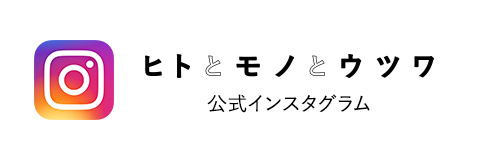ウツワ
2015.10.01 THU.
Roughly 13,000 deaths every year. How the pink ribbon movement can reduce the number of deaths due to breast cancer by at least one.
In 2012, 81,000 new cases of breast cancer were diagnosed, and it is said that 1 in 12 Japanese women will develop breast cancer. The number who will die of breast cancer is roughly 13,000 every year. This is the current situation in Japan. It has been around 15 years since the pink ribbon movement took off in Japan. Let us think together about what the pink ribbon movement and we ourselves can do to further reduce the number of women who die of breast cancer.
Photo: Kazumasa Takeuchi (STUH)
Text: Rie Hayashi
It has been about 15 years since the pink ribbon movement started spreading in Japan. What are the current conditions?
The pink ribbon movement originated during the 1980s in America. It first began to spread in Japan in 2000, and now landmarks around Japan, such as Tokyo Tower, are lit up in pink as part of the pink ribbon movement. How have conditions in Japan changed over those 15 years? In fact, awareness of breast cancer and pink ribbon has been increasing year by year. Though the phrase “pink ribbon” had almost no recognition 15 years ago, in a survey conducted 2 years ago, roughly 99% of respondents answered that they know about it. However, in spite of this, the reality is that the number of women who develop breast cancer and the number of deaths due to breast cancer continue to rise year after year. In 2000, about 1 in 30 women developed breast cancer. Now, the rate has risen to roughly 1 in 12. The number of deaths each year is approximately 13,000. That is even more than traffic accidents.
Despite increased awareness, why does the number of deaths due to breast cancer continue rising?
The rate of awareness in Japan for pink ribbons is 99%. So why is it that the number of deaths due to breast cancer continues to rise? Although people are aware, many do not actually take action to get a breast cancer screening. At Stage 0, which is called early detection, the survival rate is 95.45%. However, the longer detection is delayed, the lower the survival rate falls. Eventually, it drops into the 20% range. Breast cancer screenings are intended to detect breast cancer at Stage 0 in order to prevent this. According to a recent Comprehensive Survey of Living Conditions, the screening rate has finally reached the 40-50% range. But this is still not enough. In order to actually lower the death rate for breast cancer, the screening rate must at least be increased over 50%, and up to 70-80% if possible. There is actual precedent for this in developed nations. In 2000, the rate of women who developed breast cancer in America was about 1 in 8. Despite this, the number of deaths due to breast cancer was decreasing. This is not because America’s medical treatment is more advanced than Japan’s. The important point is the breast cancer screening rate. Thanks to the success of the pink ribbon movement, the screening rate at the time had risen into the 70-80% range. The screening rate in Japan at the same time was just 7-8%. That is a difference of a factor of 10. Even now, despite recognition by 99% of people, 50% of people do not take action to get screened. What is required now is to investigate the cause of this and work to improve the situation.
How the pink ribbon movement-and we, too-can get people to go and actually get screened for breast cancer.
The only way to increase the screening rate is to continue creating opportunities that convince women they should go get screened. There is nothing the doctors who treat breast cancer can do if women do not go to a hospital or clinic. An overwhelming majority of people who went to get screened for the first time said that they were prompted to take the actual first step by a push from someone close to them. The pink ribbon movement has devised a variety of ways to create these opportunities. For example, they hold fun family events and collaborate with a wide range of businesses. The campaign by UA Ltd. is also a part of this. We hope that those of you reading this article will be prompted to take the first step and get screened, then encourage those around you to get screened as well, prompting Japanese women to take real action one by one. Just one piece of advice could save someone’s life. When you think about it that way, doesn’t it make you want to tell someone?
Make a habit of doing a self-check!
First, take a look at your breasts. Has anything changed? Is there anything that concerns you? Breast cancer is the only kind of cancer you can detect yourself. Doing a self-check every month and getting regular breast cancer screenings could save your life.
(Editor) Japan Society of Breast Health(https://breastcare.jp/index.html)
First of all, if you recognize having any of the symptoms below, please get examined immediately by a healthcare provider such as a breast oncologist or breast surgeon.
・ Presence of lumps or swellings
・ Discharge of blood or secretions from nipple
・ Red patches on the skin
・ Tightness or dimpling of the skin or nipple
If you do not notice anything out of the ordinary right now, make a habit of doing a self-check once a month!
<CHECK 1> Look carefully.
Stand in front of the mirror with your arms raised high and look carefully.
→Is there any tightness, dimpling, changes in areola, turning inward of the nipple, or skin irritation?

<CHECK 2> Squeeze.
Squeeze your breasts and nipples.
→Is there any discharge?
<CHECK 3> Touch.
Using your right hand on your left breast and your left hand on your right breast, hold the tips of your fingers together and move them in a coin-sized circular pattern. Carefully check the breasts, under bust, collarbone, and underarm area.
→ Are there any lumps or hard spots?

*If lying down, put a pillow or cushion under the side of the breast you are checking, or if in the shower, use the lather from body soap to make the movement smoother.
If you find anything at all that concerns you during a self-check, do not hesitate to get a breast cancer screening. Consult a specialist physician right away instead of trying to resolve the problem yourself.
Source: National Cancer Center Cancer Information Service
(http://ganjoho.jp/reg_stat/index.html)









